
The largest master of the Dutch still life of the early period was Willem Head, who worked in Haarlem. His favorite motif, repeated in many works, is a so-called breakfast, that is, an image of a table set on which a dish with bread or cake is placed, a silver or tin cup, a glass glass, plates and knives. In this picture, all of the above items are presented, and in addition to them, several shells with oysters and eggshells.
The artist paints an extremely ordinary picture with those products and dishes that could be seen on the table of the Dutch citizen. However, the simplicity of the motive is only a deceptive appearance, behind which the allegorical meaning always lurks. The most extreme realism in the still life of the XVII century is naturally combined with allegory. And the more truthfully objects were depicted, the more interesting for the viewer was the mystery of their symbols.
By the beginning of the century in the Netherlands there was a vast vocabulary of allegories, familiar to every educated person. With his help, he himself could interpret the images of a still life. Most often the open shells were a sign of deceptiveness of carnal pleasures.
Glass or crystal glasses symbolized the fragility of earthly existence, and the remaining drink in the vessel – not lived up to the end. Bread and red wine reminded of Christ’s atoning sacrifice, the egg was perceived as a symbol of the Resurrection, and an empty shell meant the defilement of a body deprived of the soul.
 Still life with a golden cup by Willem Klas Kheda
Still life with a golden cup by Willem Klas Kheda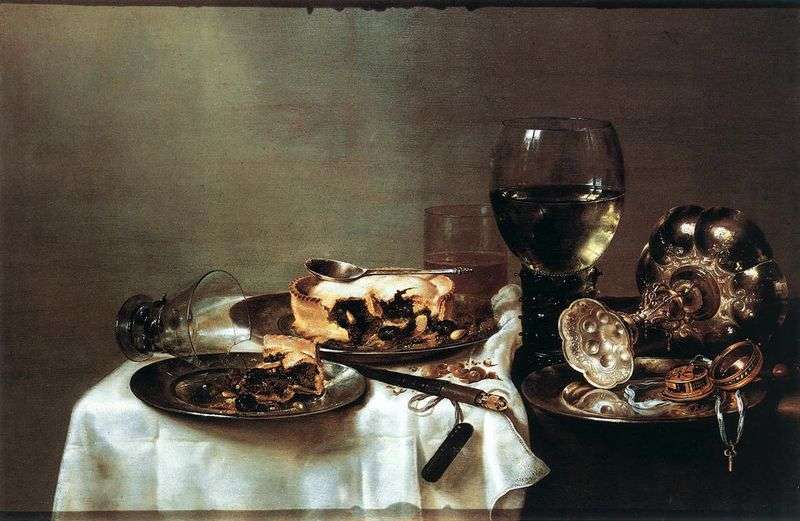 Breakfast with blueberry pie by Willem Klas Heda
Breakfast with blueberry pie by Willem Klas Heda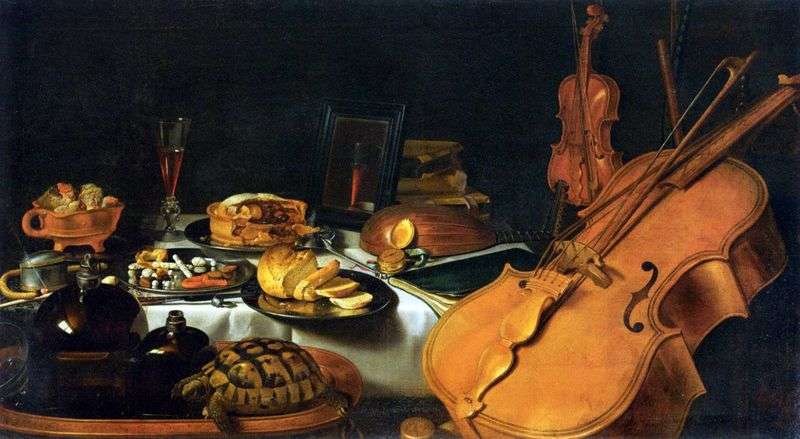 Still life with musical instruments by Peter Klas
Still life with musical instruments by Peter Klas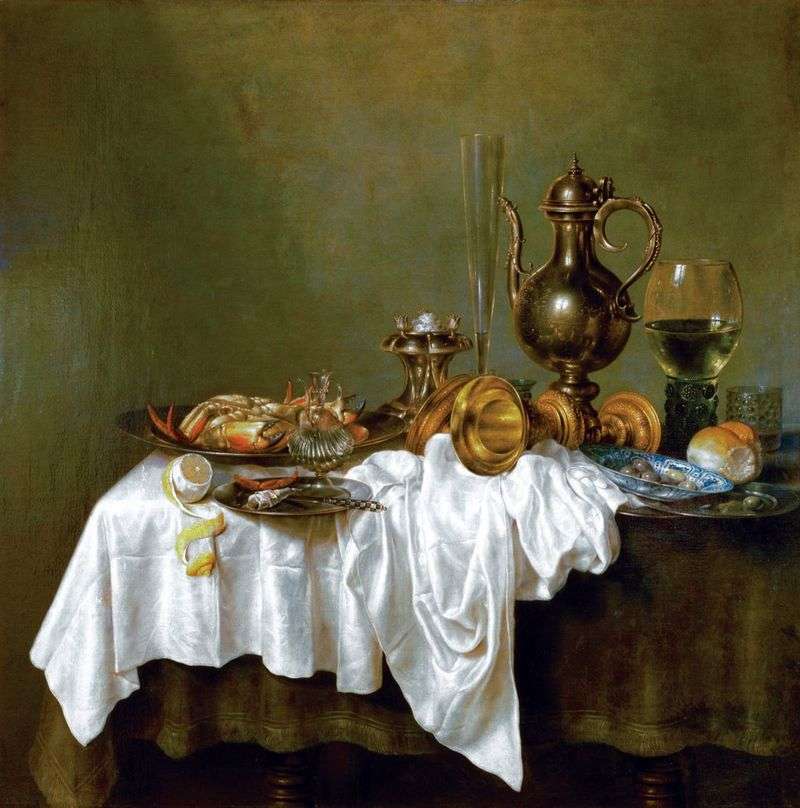 Breakfast with crab by Bill-Klas Kheda
Breakfast with crab by Bill-Klas Kheda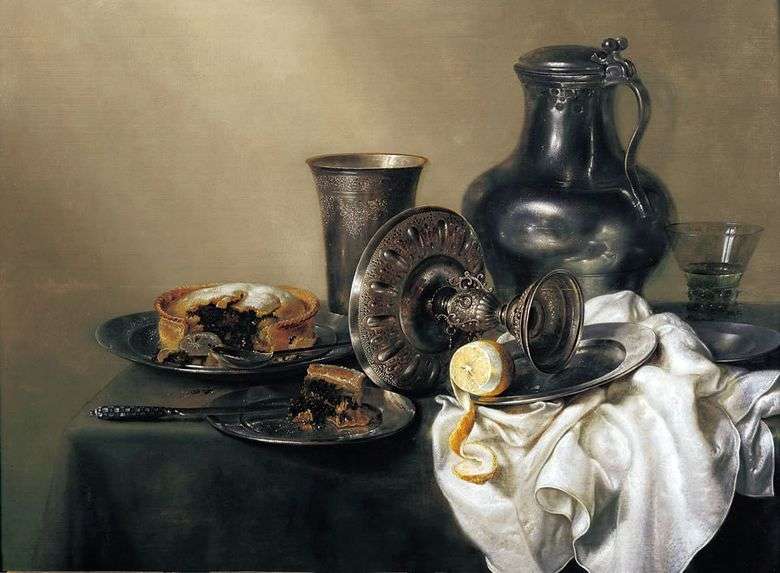 Bodegón con una copa de oro – Willem Klas Kheda
Bodegón con una copa de oro – Willem Klas Kheda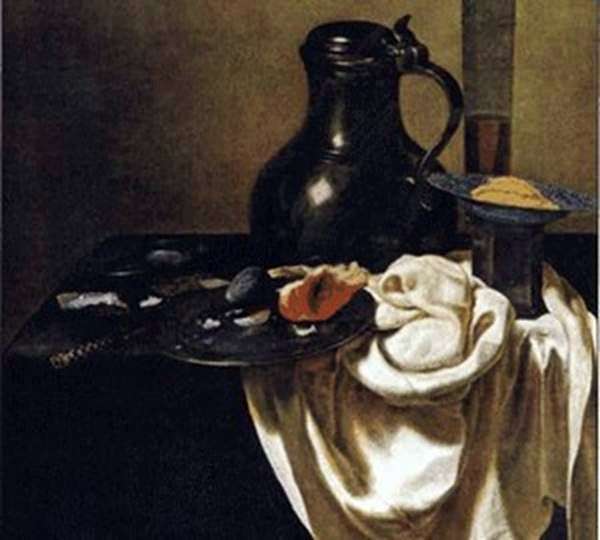 Naturaleza muerta con una taza de hojalata – Willem Klas Kheda
Naturaleza muerta con una taza de hojalata – Willem Klas Kheda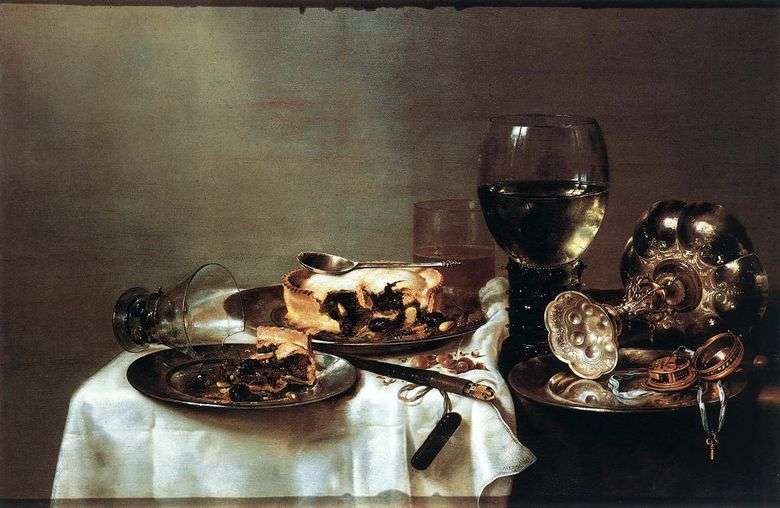 Desayuno con pastel de arándanos – Willem Klas Kheda
Desayuno con pastel de arándanos – Willem Klas Kheda Still life with a drinking horn by lobster and glasses – Willem Kalf
Still life with a drinking horn by lobster and glasses – Willem Kalf